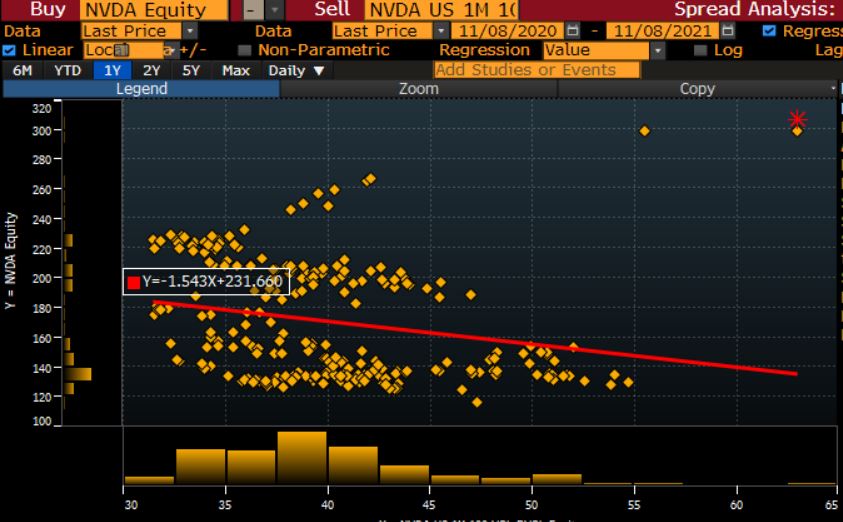
In the old days (ie, 2 years ago), being short an upside call was pretty harmless. "I'll buy some stock, maybe lean long with client," said the guru sell-side derivs book-runner who made the price.
"Plus, when the stock rises, it will do so gently. Stocks are escalator up / elevator down assets!", she thought to herself. "Plus, if I'm using market implied vol to calc my delta, I'm probably already long more than I need to be should the stock pop."
Then came 2020. "It's complicated," she said, adding "I'm getting two things very wrong now." The up-crash in stock prices, a defining characteristic of the Meme era was one.
"These jumps are outrageous and can't be hedged. Did you know that in CAR since October, the realized vol on up days is 300?! It's 3x that on down days!"
"Short gamma into an upcrash of that size is painful". Reflecting on the losses, she added a second complication. "Stocks and their vols are supposed to move opposite each other."
"Changes in the VIX are 80% negatively correlated to the changes in the SPX," she asserted. "But look at these two charts in NVDA. I'm short the gamma, short the vega and short the correlation between the stock price and the vol. I'm way underhedged."
Positive price / vol feedback loops....they are fun…but they never end well (tech, 2000, crude 2008, gold 2011, bitcoin 2017, vol of vol 2020)
(she sold some VIX futures to make the money back)
(she sold some VIX futures to make the money back)
• • •
Missing some Tweet in this thread? You can try to
force a refresh






